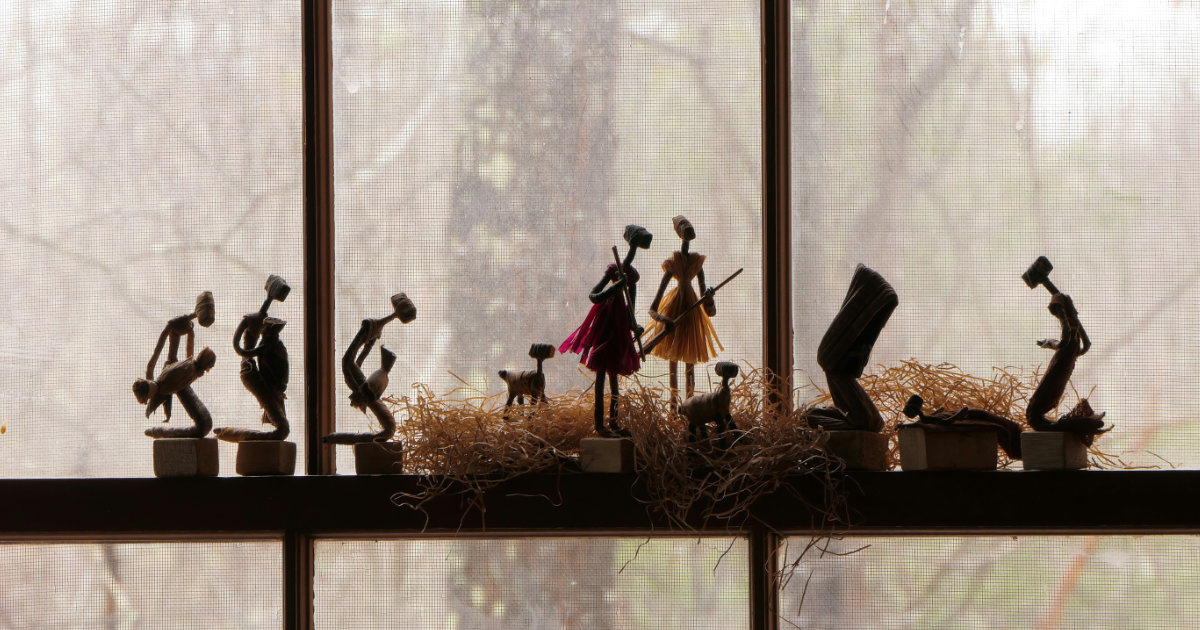Photo by Patti Black – Unsplash
The Conspiracy of Foreign Definitions and the Negligence of the African Elite
In memory of Sal J Kitololo – we put up this project together when we were young and curious. I am still curious and young in a different way. The words and thoughts still linger and still have a voice.
The issue of African Identity perhaps was never an issue until widespread African exposure to the rest of the world during the colonial era and the pre-colonial ‘opening of Africa’ to the rest of the world by European explorers. At this time, the first contributors to the question (of who the African is) were the Europeans. For obvious reasons, their frame of reference was themselves, European culture and Europe. This led to definitions that were mostly unflattering to Africans. A number of centuries later, much fairer and more objective assessments have been made of who Africans were (before the explorative and colonial eras) and who they are now. The thing that, on the whole remains largely unchanged, is who crafts the definition: ‘African’ is still defined largely through non-African eyes and world-views.
Non-Africans write most of the books about Africa and African experience that enjoy widespread circulation. “I had a farm in Africa…” and such opening lines enjoy widespread global consumption. ‘African Fashion’ is largely the domain of non-Africans or Africans of non-African descent. Non-African experts many times write books on African religion, culture and language while African experts rarely commit their perspectives to print. While external points-of-view tend to be more objective, and therefore have a place in any subject’s treatment, the absence of African involvement in defining ‘African’ creates an unhealthy imbalance.
This begs the question, first of all, who constitutes an African? Is it one born in Africa? Is it a person of African citizenship? Is someone of African descent African, regardless of whether she or generations before her have ever been in Africa? Is it a racial category, African? Quickly, we must agree that no consensus has been developed on this issue. In this essay, African refers to people who’ve lived on the continent and consider themselves African on the basis of birth or descent. (This includes South African Afrikaners, Africans of Asian descent, etc.)
Consumption of African Culture
A people’s identity is reflected in that people’s culture. That culture is expressed of course in cultural artifacts, Art in short. The consumption of this Art is ordinarily an integral part of the society, Americans consuming American Art, Japanese consuming Japanese Art, etc. If Kenya is representative of Africa, interest and consumption of African Art, and consequently culture is the domain of foreigners. Most of the buying of African Art, from music to literature to visual art is by non-Africans. The Art Centers established to promote cultural creativity are funded and usually founded by non-Africans. The Trust for African Rock Art is funded and run by non-Africans (friends of Africa, you see?).
While African culture is evolving, it must evolve with respect to demand, those whose interest and consumption drive its evolution. For this reason scenarios like the following become the norm:
- Painters trying to get their work exhibited at a famous Art Gallery in Nairobi are told that only ‘African paintings’ are exhibited, that is paintings that do not look like Michelangelo’s or Rembrandt’s. The primitive or ‘naïve’ style is encouraged. Painters have actually been taken into a room and shown paintings and instructed to ‘paint like this’.
- An artist was commissioned to do a painting of a village setting with a female child for an established organization. When he submitted his work, the non-African director told him that the child was ‘too heavy’, that is too fat. Asked if she had ever been to a village, the director answered ‘no, but a child cannot be that heavy, it should be slimmer’. It took the persuasion of Africans on the board to convince the director that the work represented a child in an African village.
- A painter trying to submit work to a gallery was told he uses ‘European colors and shapes’ in his work. The colors in question were hues of blue for the sky and so on. It is not clear what shapes were being regarded as European.
Needless to say, if non-Africans wish to buy a certain kind of Art as African, they have this right. Africans rarely take overt or consistent interest in these cultural artifacts by consumption (buying) them and supporting their creation. This causes, of course, cultural artifacts to reflect the demands and desires of non-African consumers.
Where popular culture is evolving in the urban centers, there is a trend towards adopting foreign forms from outside Africa, foreign styles of those forms, and attempting to then transplant ‘African content’. In this terrain, what is foreign and what is African is even hard to establish. Still, from theatre to music to fashion, this identity crisis is clearly observed. And this culture enjoys large consumption by the urban African elite (the educated people living in the cities) thus validating the sense of identity crisis.
Foreign Definitions
It is difficult to argue that non-Africans should drive and define the direction African culture is going. However, history, especially the colonial phase in Africa, put non-Africans in a position of great influence. Now that influence, whether overt or covert, is a part of the psychological framework of African thinking, so Africans even encourage foreign definitions at times. This is a historic cause of non-African influence on African identity. (While foreign influence affects every culture, and this is many times positive, in this case foreign influence drives the development of the culture, which then becomes an inauthentic expression of the people’s identity, a dishonest culture.)
There are other causes of ‘foreign definition’ of African culture and thus identity. Financial constraints have played a part where it is expensive to develop independent expressions of culture and identity, forcing artists and cultural producers to develop what will sell. There are global cultural realities: popular art tries to compare both in form and content with well-developed, globally accepted media and cultural produce from the ‘First World’. There is the force of genuinely held beliefs by non-Africans about what is African, fueled by history and by their own early exposure to Africa in their culture and media, beliefs that are many times unbalanced and ill-informed. For example, in many European movies, references to Africa take the form of “the old cripple down the street who lost his leg in a war in Africa”, the brave explorer with a scar across his face, which he got “fighting a wild animal in Africa”, and comments such as this by an actress recently: “everything in Africa has teeth”.
A more active part in defining African culture and identity should be played by African actors, not the passive role that has hitherto been observed. Someone stated about identity, that “you tell someone your name, you don’t ask them what your name is”. For this to happen, historical, psychological, financial/economic, and educational factors need address. When Africans come to terms with these factors, there is greater possibility that an authentic African identity will begin to find its natural cultural expression on the continent, and beyond.



